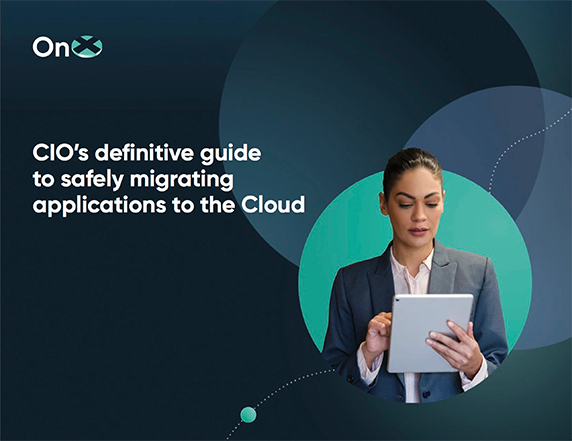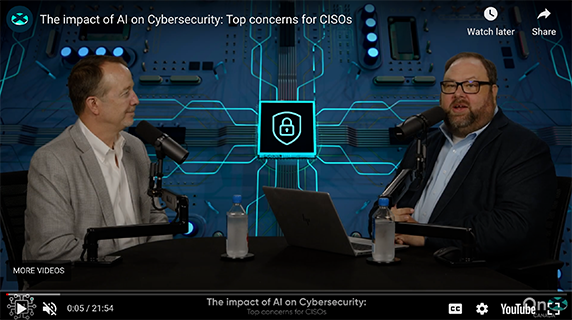
The future of enterprise is in the Cloud
In today’s technology landscape, cloud computing continues to be a new paradigm for many businesses. But Gartner forecasts that by 2028, the Cloud will be essential to the infrastructure of most organizations.
This shift is the result of multiple trends in enterprise technology. One is the growing budget businesses are allocating to the Cloud, which will soon exceed $1 trillion—Gartner estimates place this milestone in 2027, while IDC forecasts it much sooner, in 2024. Also influencing the prevalence of the Cloud is the exponential growth of data generation and storage. In 2023 alone, businesses created an estimated 130 zettabytes of data—a number that, by some estimates, doubles every two years.
These enormous quantities of data represent a valuable asset for many corporations. Artificial intelligence (AI) and machine learning (ML) are essential for data analysis and insight-gathering on this scale. Still, most organizations need help to support their storage and computing requirements onsite. Their increased use further drives cloud adoption, particularly through AI services like ChatGPT.
The Cloud also enables organizations to access advanced technologies and data-heavy solutions that might otherwise be out of reach, like event-driven architectures, quantum computing, IoT devices, and edge computing. This post will take an in-depth look at the factors driving the shifting role of the Cloud in enterprise technology and the future business impact of cloud computing.
The Cloud’s evolving function
Initially, cloud development prioritized storage space and application delivery, or Software as a Service (SaaS). These innovations led to an increase in hybrid and remote work, low-code/no-code development platforms, Internet of Things (IoT) device frameworks, and consumer-scale AI. As the Cloud continues to grow, analytics will grow with it, enabling organizations to harvest new insights from their data. SaaS platforms will also continue to evolve, with virtual environments becoming more robust and less constrained by the limitations of hardware or on-premises infrastructure.
Also read: Nine advantages of a managed cloud environment from OnX
Market factors shaping the future of the Cloud
Environmental sustainability
The three largest providers of cloud services—Amazon Web Services (AWS), Google, and Microsoft—have set the goal of reaching net-zero carbon emissions in the coming decades. Cloud technologies in the form of AI and ML will be essential in assessing energy consumption and enabling power grids to adapt. This principle also works on the local scale, leveraging IoT devices to track and optimize energy use in server rooms and other critical infrastructure environments.
Data governance and regulatory compliance
Cyberattacks are steadily increasing in complexity. In response to several highly visible breaches, regulators continue to develop stricter guidelines surrounding end-user data privacy and proper handling. Cloud-native security, addressed in more detail below, has become the standard for compliance with privacy regulations across industries.
Technological advances impacting cloud computing
Artificial intelligence and machine learning
Machine learning and AI require access to enormous datasets and high-powered computing resources, whether used to generate images or text, analyze data, identify threats, or direct network traffic. The Cloud is the chief source of data and the computational power driving AI, which is only growing in popularity through public-facing services.
Multi-cloud and hybrid cloud environments
The business impact of cloud computing is such that organizations undergoing digital transformation face a formative choice. A private cloud environment offers greater data security and administrative control, while a public cloud is often more familiar to users and easier to integrate. Which to choose?
Hybrid clouds bring together the best of both options. In this model, the toolset of a public cloud is overlaid onto the privacy of an onsite data center and made available to users through a single unified platform. Fully private clouds can be prohibitively expensive, and the hybrid model provides much of the same security while being easier to use. The implementation, however, can be complex, and bringing in expert third-party technology consultants is recommended.
Some businesses use multiple cloud providers to enable different areas of their operations, referred to as a multi-cloud approach.
Industry clouds
Exacting data governance and regulatory compliance requirements drive the development of cloud tools to serve specific, highly regulated industries such as healthcare and finance. These industry clouds are designed with the needs of their particular vertical in mind, prioritizing data security and industry-specific functionality. This business impact of cloud computing has created a swiftly evolving landscape, with Gartner anticipating that nearly three-quarters of enterprises will use an industry-specific cloud by 2027.
Containerization, microservices, and serverless computing
Containers represent a way to modularize service delivery in a cloud-native environment. These standalone packages contain an application and everything the application needs to run—code, libraries, and more—so that the application performs well across almost any environment. Containerization eases and speeds up the development process for programmers.
Relatedly, microservices break an application into component parts, each of which can run independently or concurrently with others. Microservices make applications more reliable, especially at an enterprise scale, and allow organizations to adapt to user demand more efficiently.
In a serverless computing model, an organization pays for cloud services based on the resources used rather than the storage space occupied. This eliminates overpayment for empty storage and reduces costs for many businesses.
Modernization of core applications
Many organizations, hesitant to risk mission-critical applications, begin their digital transformations by migrating less-essential legacy applications to the Cloud. But as cloud-native applications increase in prevalence, these businesses risk losing ground to competitors that choose to take the plunge.
Learn more: Get ahead by migrating legacy applications to cloud environments
Edge computing and the Internet of Things
A significant bottleneck in the spread of IoT devices like sensors and wearables was the need for this connected hardware to send traffic back through a centralized network hub. Edge computing, supported by cloud virtualization, allows computing to happen at the network’s edge, nearest to the devices collecting data. As a result, IoT networks are faster, more responsive, and more secure.
The cybersecurity impact of cloud computing on businesses
A decade ago, cloud environments were perceived as less secure than on-premises data storage. In the intervening years, however, on-premises security has proved to be demonstrably less effective than cloud security, and businesses have taken note. So has Gartner, which estimates that by 2027, cloud environments will be the accepted standard for technology environments.
The business impact of this shift to cloud computing is a new set of cybersecurity philosophies and standards:
- Extended threat detection and response (XDR): XDR leverages AI and ML to monitor and analyze security information from endpoint systems, networks, and the Cloud. This data allows an XDR system to identify, categorize, and alert staff to cybersecurity incidents, resulting in a consolidated view, fewer false positives, and quicker incident response.
- Incident response: A pre-defined organizational process for responding to a cybersecurity incident or breach.
- Identity access management (IAM): A system for controlling user access and privileges and mitigating the risk of intrusions.
- Zero trust: A cybersecurity philosophy that hinges on the principle of providing the minimum necessary access to any requesting entity.
- Encryption: Using advanced encoding strategies to secure data both in transit and when stored.
- Blockchain: The blockchain, most notable for its relationship to digital currencies, is a decentralized record that can support transparent, anonymous transactions. Its applications are broader than finance, with the potential to fundamentally change the way secure transfers are handled.
Learn more: Six principles for securing the cloud
Guiding your cloud transition
The business impacts of cloud computing thus far are significant and undeniable. The Cloud’s influence will only continue to grow in the coming years, approaching universal adoption by 2028. Enterprises that embrace a cloud transformation early can lead the marketplace with the increased flexibility and efficiency that the Cloud offers.
The transformation itself, however, is a resource-intensive undertaking, one that organizations may not have the bandwidth or the expertise to complete alone. OnX has the highly skilled engineers and project management experience to help you accomplish your digital transformation goals.
Contact OnX today to learn more.
















